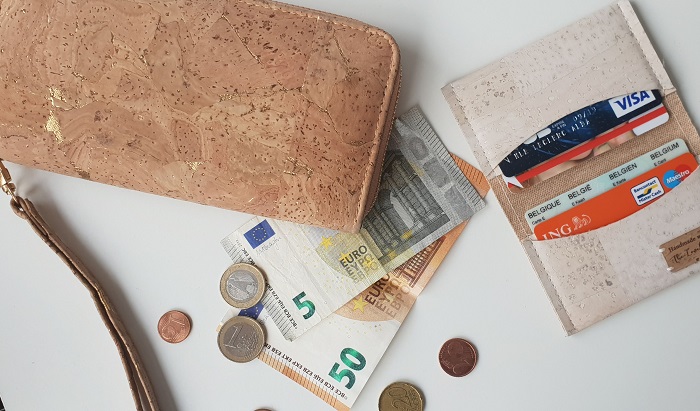Is cork sustainable or is it just another fad?
You may have noticed that more and more brands, especially vegan brands, are now making cork accessories such as bags, wallets and shoes. But is cork sustainable or is it just greenwashing? Let’s dive into the topic and find out what cork is, what we can do with it and what makes it so special.
What is Cork?
Cork comes from trees. More precisely, cork is the bark of the cork oak, Quercus suber, that naturally grows in the Mediterranean region. The bark forms a 3 to 4 cm layer around the trunk (a bit like a blanket) that skilled workers “peel off” the tree with an axe. It sounds crazy but this operation does not harm the tree. Once harvested, the cork dries outside for 6 months. It will later be boiled and pressed flat.

Why is cork sustainable?
We just saw that cork comes from trees. And just like any tree, cork oaks turn carbon dioxide into organic matter as they grow. Moreover, every time we harvest their bark, the trees consume even more CO2 in order to grow it back. Needless to say that this happens without the use of pesticides or fertilizers as well as no irrigation. In fact, cork oak forests form a rich ecosystem. The trees preserve the soil they grow on and home many different species of plants and animals. The trees live up to 300 hundred years and the harvest can take place every 8 to 10 years. In other words: cork is a renewable resource.
What can be made from cork?
I bet the first thing that comes to your mind is wine corks, right? And you’ve probably seen cork coasters and boards before. It is also common in construction (for insulation), furniture and interior decoration. But did you know cork was a leather alternative? If you press a thin layer of cork onto a canvas, a soft leather-like sheet forms. Craftsmen then turn them into bags, wallets, shoes and even jackets! I know it sounds super innovative but this is actually a Portuguese tradition.

Is cork a good leather alternative?
Cork definitely has a unique look, which in my opinion gives it all its charm. It can be dyed and then looks a little bit like suede. Cork is a natural and biodegradable material but it’s also very resistant and durable. I am tempted to say it outperforms leather in that area; or at least, it’s the case for every cork accessory I own. They look as good as new after years of use. The reasons is that 1) cork is water resistant and therefore, easy to clean and 2) cork is naturally scratch resistant thanks to its structure (cork cell walls have a honeycomb structure if you want the details).
It’s not just about the environment
Most of the world’s cork production comes from Portugal where harvesters and craftsmen receive decent wages and work in good conditions. Besides, the brands offering cork goods are usually small independent labels (like The Lovely Things). Last but not least, producing cork does not harm animals.
So is cork sustainable? Yes, definitely yes!
It might even be one of the most sustainable materials out there. Growing the trees supports ecosystems. The harvest and processing require few resources (compare that with the leather industry). Cork goods are durable and look cool as hell!
Do you own any cork accessories?

